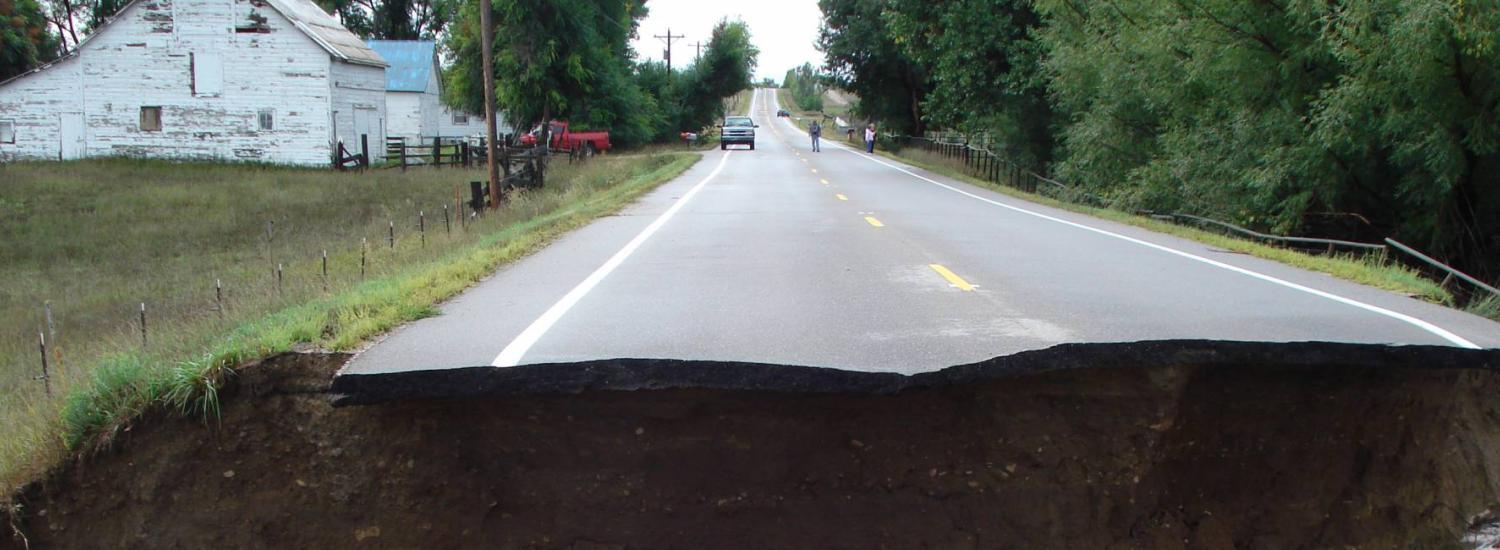Preparing for the Worst
New study explores how western cities respond to weather-and-climate-related hazards

Flood, drought, fire, blizzard, tornado: these are but a few of the natural hazards faced by communities around the western United States. But rather than wait for federal or state officials to lead the way, it’s cities that are really taking action in dealing with these kinds of hazards. A new study out online in the journal Environment and Planning A explores exactly what kinds of actions these cities are taking and why. And while responses to hazards vary, the researchers found several key elements, including external support, that are more influential in the development of much-needed hazard response plans.
John Berggren is an author on this study and a graduate student with CIRES’ Western Water Assessment and the University of Colorado Boulder Environmental Studies program. Led by CIRES Fellow Lisa Dilling, Berggren and his colleagues chose 60 cities across Utah, Colorado and Wyoming to study. Over the course of two years, they talked to city managers, emergency managers and at least one elected official in each city to find out what each place is doing to handle existing weather and climate hazards, such as flood or wildfire evacuation plans. “We specifically wanted to know what they were currently doing,” says Berggren, “That would inform how we expect them to handle future hazards. Additionally, we wanted to know why they’re doing what they’re doing.”
In six of the cities, the team dug deeper, talking in depth to as many as 10 additional municipal employees and managers involved in hazard planning and response. “We asked really detail-oriented questions,” says Berggren, “Things like: “Why did you choose that specific flood mitigation strategy over another?””
The team collected all their findings in two different datasets— quantitative information from the 60 cities and qualitative information from the six case studies—to tell the story of how cities respond to natural hazards. They found that while there’s no one variable that drives what cities do—a silver bullet—the combination of a few different variables seems to get cities to take more action.
Those variables include whether a town or city had previously experienced a natural hazard event; whether a city thought they faced potential risk of experiencing an event; whether the city had a “champion”—an individual who was really pushing for hazard planning and response; and, finally, whether a city received external incentives, such as funding or regulations.
Of those, the presence of external funding or external regulations stood out as the most significant variable in predicting whether a city would implement plans to deal with climate hazards. That would indicate that expecting cities to just “go it alone” in adapting to climate change may not be the best way forward. But, says Berggren, it doesn’t necessarily mean there should be a top-down approach to getting cities to tackle these challenges, but rather that external incentives can really make the difference in whether a city ultimately puts hazard response plans in place. The key seems to be letting cities be more flexible— supporting them with external funding or supporting them by providing resources—but allowing them to make decisions based on their own experiences and capabilities. In other words, he says, telling them, “You have to develop an all-hazards plan but how you do that is up to you.”
Going forward, the team may follow up with the people they interviewed in those 60 cities. The original conversations took place between 2011 and 2013, so cities’ hazard response may have evolved. “We want to track how these things change over time,” says Berggren. “If they have changed, we want to find out why. And if we’re going to see adaptation at the municipal scale, how do we support that process? How do we foster an environment that allows that to happen?”